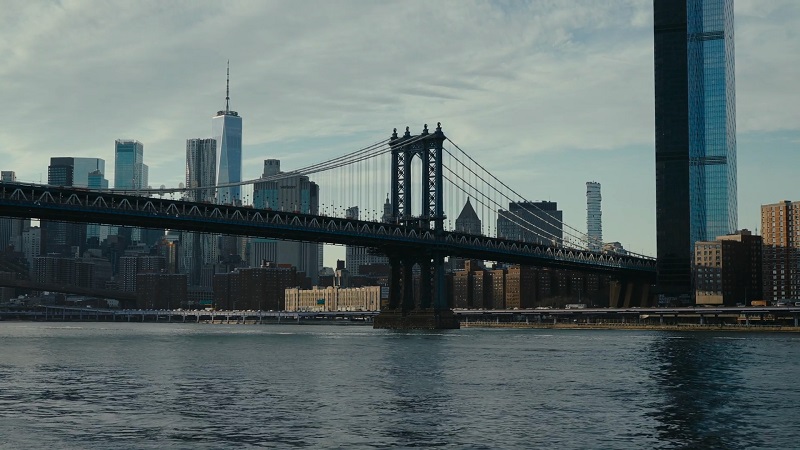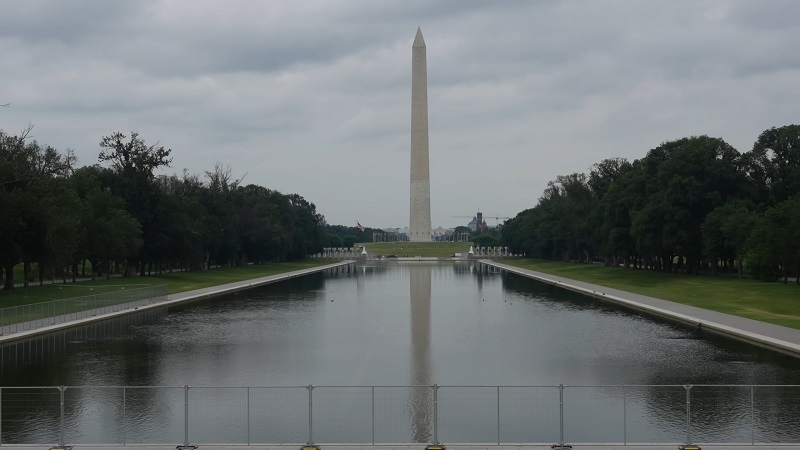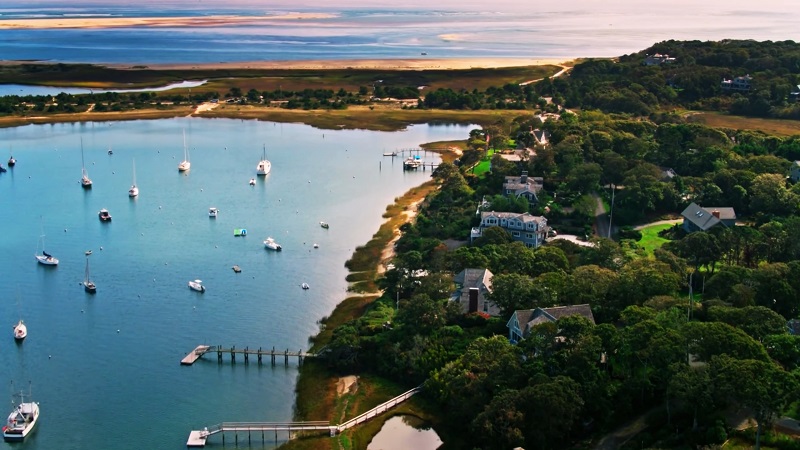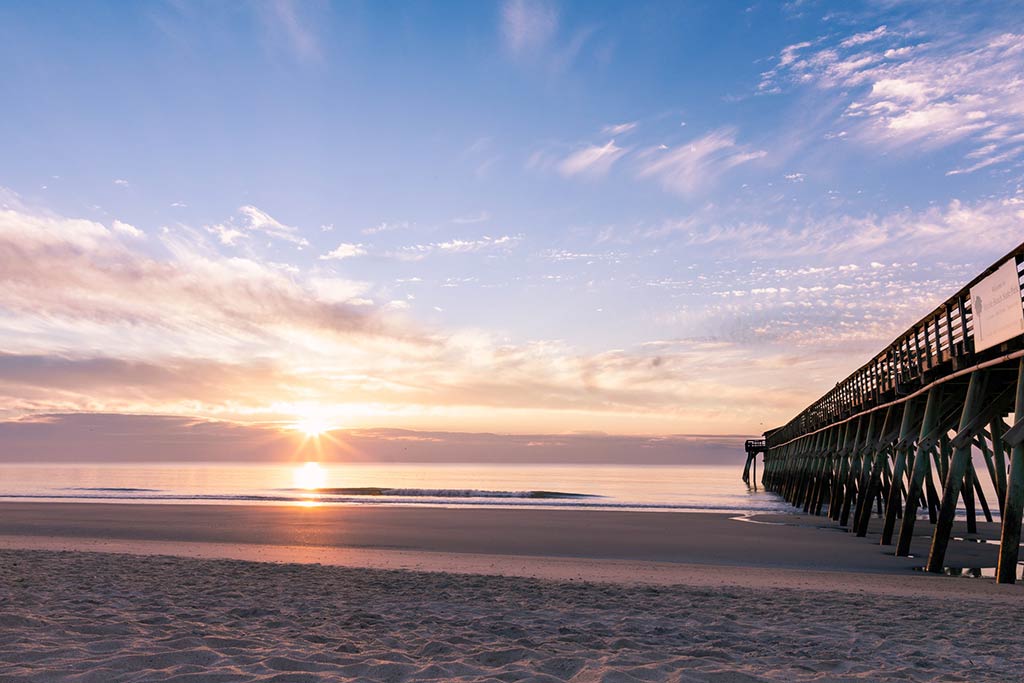A new travel season brings new opportunities. The East Coast offers a powerful mix of culture, nature, food, and events. Each state along the Atlantic presents something worth seeing. With over 2,000 miles of coastline between Maine and Florida, you can experience both fast-paced cities and peaceful coastal escapes.
Travel interest has surged. Large events like the 2024 NFL Draft in Detroit drew nearly 800,000 visitors. That reflects a growing demand for cities that offer both excitement and variety. Travelers are not looking for copies of last year’s trip. They want new memories, deeper experiences, and better balance between rest and exploration.
This guide highlights where to go across the East Coast in 2025. Travel + Leisure reviewed 120 places and narrowed them to 50 for their “Where to Go in 2025” list. Many East Coast destinations made the cut. Small towns with historic charm, major cities with global influence, and national parks with unforgettable views all offer strong reasons to visit.
Each section offers a clear view of what makes each place special. You will see where to go for food, where to find history, and where to enjoy the coast. Travel planning now involves more than picking a place. It means choosing a place that fits your mood, goals, and energy. Every traveler has a different reason to hit the road. The East Coast meets them all.
New York City: Urban Excitement Awaits

New York City defines energy and ambition. It pulls travelers into its rhythm through unmatched landmarks, non-stop culture, and a pulse that never slows down. As East Coast travel takes a sharper turn toward rich, full experiences in 2025, New York City stands ready. It does not rely on reputation alone. The city renews itself constantly, offering both the timeless and the unexpected.
Iconic Landmarks and Attractions
No trip to New York feels complete without standing in the shadow of its icons. The Statue of Liberty rises above the harbor as a lasting symbol of freedom.
The ferry ride to Liberty Island includes a stop at Ellis Island, where stories of early immigration bring the past into focus. Adult tickets start at $24. Crown access sells out months in advance.
Central Park remains a powerful contrast to the urban rush. Spread across 843 acres, the park allows for walking trails, open fields, and art tucked into corners. Rowboats glide across the lake. Street performers energize Bethesda Terrace.
Nearby museums like the MET and the American Museum of Natural History offer depth for those who seek meaning, not only scenery.
The Empire State Building gives one of the best views in the city. Adult entry starts at $44. A visit at sunset pairs skyline magic with crowd volume, so early access or late-night hours are best for a smoother experience.
View this post on Instagram
The High Line, an elevated linear park built on a historic rail line, delivers a walking path surrounded by modern architecture and public art, offering a fresh view of Manhattan’s west side.
Broadway remains a must. Tickets range widely, but last-minute discount booths like TKTS often offer top shows at nearly half price. Iconic plays like The Lion King or newer hits often sell out, so planning early brings the best options.
Culinary Scene to Explore
Food defines the New York experience. Each neighborhood carries a flavor shaped by generations of immigrants, new chefs, and long-standing institutions. Start with a slice at Joe’s Pizza in Greenwich Village for $3. Or choose Lombardi’s, the country’s first pizzeria, where a full pie averages $22. Both deliver flavor and tradition.
View this post on Instagram
Street food still thrives. Halal carts, taco trucks, and pretzel stands serve locals and visitors without missing a beat. In Queens, Jackson Heights brings together flavors from Ecuador, India, Nepal, and Thailand, often on the same block.
For more upscale dining, book ahead. Michelin-starred restaurants like Le Bernardin or Eleven Madison Park require reservations months in advance. Prix fixe menus often begin above $300 per person. For modern twists, try Momofuku Ko or the newer spots in Hudson Yards. These restaurants reflect a culinary scene that keeps pushing itself forward.
Chelsea Market deserves attention. Housed in a former biscuit factory, the market includes dozens of vendors. Options range from tacos to handmade noodles to specialty coffee. Markets across the city now shape the food scene, not only follow it.
Food tours through neighborhoods like Chinatown or Williamsburg offer guided insight into not only flavor but also story.
Washington D.C.: A Blend of History and Culture
Washington D.C. carries weight. It stands as more than a government seat. It holds the story of the nation. Travelers are drawn to its monuments, museums, and civic energy. Each visit brings layers of meaning shaped by art, architecture, and ongoing public life. The city meets growing interest in substance over spectacle. It offers places where history speaks clearly and culture stands front and center.
Must-See Monuments and Museums
The National Mall acts as the city’s open-air museum. At its core lies the Lincoln Memorial, a structure that speaks to dignity and sacrifice. Stand on the steps and face the Reflecting Pool. The Washington Monument rises straight ahead, framed by open space.

Nearby sits the U.S. Capitol, which continues to shape decisions that echo across the globe. Guided tours allow access to the Rotunda, where every detail reflects purpose and legacy. Walk the grounds, then step into the Library of Congress for more depth.
The Smithsonian Institution anchors the city’s museum scene. Admission remains free. The National Museum of American History preserves key artifacts, including the Star-Spangled Banner. The Air and Space Museum displays engines, shuttles, and tools that changed human exploration. The National Museum of African American History and Culture stands apart, offering one of the most powerful experiences in the city.
View this post on Instagram
Art lovers can find balance inside the Hirshhorn Museum and the National Gallery of Art. Sculpture, photography, and classic works all find space here. Museums stay open most days between 10 a.m. and 5:30 p.m. Entry lines are common at peak times, so early arrival is wise.
Upcoming Events and Festivals
Travelers in 2025 will find D.C. in full rhythm. Spring draws the biggest crowds. The National Cherry Blossom Festival runs from March 20 through April 14. Events span nearly a month. Parades, live music, and food vendors activate every corner of the Tidal Basin. The blossoms themselves—gifts from Japan in 1912—form the visual core. Peak bloom lasts just a few days, but the surrounding activity stretches much longer.
April brings the D.C. International Film Festival, running April 5 to April 10. Screenings take place across major theaters and small venues. Filmmakers and critics join discussions open to the public. Genres range from documentary to experimental. The atmosphere favors discovery and conversation.
In May, the Jazz in the Garden series starts its seasonal run. Held every Friday inside the National Gallery of Art Sculpture Garden, each performance mixes live music with food and drinks. Seating fills quickly. Arriving early or bringing a blanket makes the evening smoother.
In late fall, the Metro Cooking Show returns in November. Celebrity chefs, food tastings, hands-on workshops, and shopping all come together under one roof. Tickets start at $25 for general entry, with separate passes required for VIP events and cooking classes.
| Event | Date | Description |
|---|---|---|
| National Cherry Blossom Festival | March 20 – April 14 | Celebration of the cherry blossoms, featuring parades, cultural performances, and food fairs. |
| D.C. International Film Festival | April 5 – April 10 | Showcasing independent films from various genres and backgrounds. |
| Jazz in the Garden | May 2025 (Weekly) | Live jazz performances held every Friday evening in the National Gallery of Art Sculpture Garden. |
| Metro Cooking Show | November 2025 | Food festival featuring celebrity chefs, tastings, and workshops. |
Must-Visit East Coast Cities: Spotlight on Charleston
Charleston, South Carolina holds its place as a top-tier East Coast destination in 2025. Its strength lies in history, architecture, and mood. Cobblestone streets, gas lanterns, and antebellum facades bring travelers into a space where the past stands visible. The city offers more than visual charm. It brings comfort through food, art, and a pace that encourages reflection.
Each block carries details that reward close attention. Horse-drawn carriages pass by iron gates and walled gardens. Historic homes line the Battery. Rainbow Row adds color to the waterfront. Beyond architecture, Charleston moves with quiet strength through culture and community.
Culinary Highlights of Charleston
Charleston’s food scene brings depth through tradition and flair. Meals here draw on Southern roots but stretch toward modern precision. Shrimp and grits arrive in cast-iron skillets at neighborhood spots. At upscale venues, the same dish might appear reimagined, served with heirloom grits and house-made sausage.
Lowcountry boils fill large tables and bring people together. She-crab soup appears on many menus, prepared with fresh cream, crab roe, and sherry. Fried green tomatoes act as both starter and statement. Local chefs draw from sea and soil to keep ingredients close and flavor bold.
View this post on Instagram
In 2025, Charleston launches its first Food & Wine Classic, a multi-day event that draws national attention. Scheduled for early October, the festival includes tastings, chef demonstrations, and pairing sessions. Tickets for main events begin around $150. VIP passes include rooftop dinners, curated local tours, and exclusive menus.
Restaurants worth noting include Husk, led by a kitchen that builds on Southern heirloom recipes. Fig delivers a fine dining approach with seasonal focus. Leon’s Oyster Shop balances comfort and quality with fried chicken and oysters served together. Charleston also supports small bakeries, specialty coffee shops, and rooftop lounges where cocktails feature local herbs and house infusions.
Cultural Events and Attractions in 2025
Charleston’s cultural core gains a new chapter in 2025 with the full opening of the International African American Museum. Located at Gadsden’s Wharf, the site holds deep historical meaning. Exhibits trace stories from slavery to civil rights to present-day legacy. Interactive displays and curated collections connect personal stories with national history.
Other cultural events carry strong local energy. The Spoleto Festival USA, held each spring, fills theaters and streets with music, dance, and theater. More than 150 performances across multiple venues keep the calendar packed for over two weeks. Entry varies by event, with early ticket purchase recommended for major shows.
Charleston’s MOJA Arts Festival, centered in the fall, uplifts African American and Caribbean heritage through visual arts, poetry readings, concerts, and youth showcases. Free and paid events both fill the program. Street art markets and community workshops increase access.
Guided tours through neighborhoods like the French Quarter or South of Broad provide historical detail shaped by architecture and personal stories. Carriage rides, walking tours, and harbor cruises help build a fuller picture. Many companies now offer themed tours focused on local artists, food history, or Gullah culture.
Beautiful Coastal Retreats: Cape Cod and The Hamptons

Cape Cod and The Hamptons hold strong appeal for those drawn to the ocean. Both deliver relaxation, but each does it on its own terms. Cape Cod leans into quiet charm and New England history. The Hamptons offer style, exclusivity, and curated luxury. In 2025, both stand tall as premier East Coast retreats.
Cape Cod, located in Massachusetts, offers a string of small towns shaped by tradition. You will find lighthouses, white clapboard homes, and seafood shacks spread across the landscape. The beaches stretch wide and clean. Coast Guard Beach, Nauset Light Beach, and Race Point Beach remain top picks for families and nature lovers. Hiking trails in the Cape Cod National Seashore provide sweeping views and wildlife sightings.
Boating and ferry rides remain central. Travelers can take a day trip to Martha’s Vineyard or Nantucket, both accessible by ferry in under an hour. Fresh seafood anchors every meal. Local restaurants serve oysters, lobster rolls, and clam chowder pulled straight from the Atlantic. In Wellfleet, oyster farms open their doors to visitors for tours and tastings. Summer months bring art fairs, local markets, and sunset concerts across village greens.
The Hamptons sit at the eastern edge of Long Island. Towns like East Hampton, Southampton, and Montauk form a cluster of luxury close to New York City. The beaches here attract a high-profile crowd. Main Beach, Cooper’s Beach, and Ditch Plains each carry their own scene. Spas, boutique hotels, and private rentals line the area.
Fine dining defines evenings. Restaurants like Nick & Toni’s and Topping Rose House offer prix fixe menus that draw bookings weeks in advance. Local farm stands sell heirloom produce, while vineyard tours in nearby North Fork round out afternoons with tasting flights. Shopping includes designer boutiques, art galleries, and curated home décor shops. The Hamptons mix elegance with shoreline ease.
Each retreat brings its own mood. Cape Cod suits those who prefer slower mornings and coastal heritage. The Hamptons suit those drawn to sleek style, culinary edge, and social energy. Both deliver coastline, comfort, and clear purpose in design.
| Feature | Cape Cod (MA) | The Hamptons |
|---|---|---|
| Beach Type | Stunning sandy beaches with dramatic dunes | Luxurious beaches with glamorous settings |
| Dining Experience | Fresh local seafood in quaint restaurants | Upscale dining with exclusive menus |
| Activities | Boating, beach outings, seal spotting | Sailing, shopping, high-end social events |
| Overall Atmosphere | Tranquil and family-friendly | Trendy and luxurious |
In summary, whether you choose the relaxed vibe of Cape Cod or the high-end allure of The Hamptons, both locations promise unforgettable East Coast experiences, enhancing their appeal as top vacation spots for 2025.
Top East Coast Vacation Spots: The Outer Banks and Acadia National Park
Two standout East Coast destinations—The Outer Banks in North Carolina and Acadia National Park in Maine—offer unmatched access to nature. Both places pull visitors away from routine and into fresh air, open space, and direct contact with land and sea. Each provides families with genuine outdoor escapes, clear beauty, and a pace that invites reflection or movement.
The Outer Banks string together barrier islands that stretch along the North Carolina coast. Soft sand, strong sun, and Atlantic waves form the visual core. Acadia National Park stands on Mount Desert Island, shaped by granite cliffs, spruce forests, and cold northern waters. Though the environments differ, both serve as places where people reconnect through motion and exploration.
Outdoor Adventures in Acadia National Park
Acadia National Park covers more than 49,000 acres, balancing forest, coastline, and mountain views. Hikers find over 150 miles of trails. Some wind gently through wooded areas, while others climb granite ridges. The Jordan Pond Path allows for a peaceful two-hour loop with full water views. Precipice Trail pushes limits with iron rungs and steep rock faces, suited for experienced hikers only.
Park Loop Road spans 27 miles and connects many of the park’s major landmarks. Drivers can stop at Thunder Hole, where waves crash into a narrow inlet with force and sound. At Cadillac Mountain, early risers catch the first sunrise in the continental United States for much of the year.
Sand Beach offers cold but clean surf. During summer, it becomes one of the park’s most visited areas. Further inland, carriage roads offer 45 miles of bike-friendly paths. Built by John D. Rockefeller Jr., they remain closed to motor vehicles. Horseback riding tours also operate across designated paths.
Wildlife appears often. Bald eagles, seals, peregrine falcons, and deer roam the park. Between May and October, whale-watching tours depart nearby Bar Harbor, offering views of humpbacks and minkes. Every season in Acadia delivers distinct experiences. Spring brings blossoms. Fall lights the trees in deep color. Winter blankets the ground and opens space for cross-country skiing and snowshoeing.
Family-Friendly Activities in the Outer Banks
The Outer Banks offer 100 miles of shoreline, history, and laid-back rhythm. Nags Head, Kill Devil Hills, and Duck form some of the more popular areas. Families can stretch out along the wide beaches, where lifeguards often monitor public access points during summer. Surfing, boogie boarding, and kite flying remain popular all year.
Jockey’s Ridge State Park hosts the tallest natural sand dune on the East Coast. Visitors can hike, run, or try hang gliding with trained instructors. Sunset views from the ridge attract photographers and travelers looking to pause before dinner.
Off-road vehicle tours lead into Cape Hatteras National Seashore, where wild horses still roam. Most tours last two hours and require advance booking. Lighthouses stand tall across the region. The Cape Hatteras Lighthouse, with 257 steps, rewards the climb with full Atlantic views.
The Wright Brothers National Memorial in Kill Devil Hills brings aviation history to life. Families can walk the flight path of the first powered flight. Rangers offer programs daily in warmer months, and the visitor center includes original artifacts and scale models.
Mini-golf, bike rentals, ice cream stands, and local seafood restaurants fill the gaps between large outings. In 2025, new guided kayaking routes along marshes and sounds offer added access to quieter areas away from waves and crowds. Sunset cruises and fishing charters also help families build new shared memories.
The Outer Banks offer 100 miles of shoreline, history, and laid-back rhythm. Nags Head, Kill Devil Hills, and Duck form some of the more popular areas. Families can stretch out along the wide beaches, where lifeguards often monitor public access points during summer. Surfing, boogie boarding, and kite flying remain popular all year.
Jockey’s Ridge State Park hosts the tallest natural sand dune on the East Coast. Visitors can hike, run, or try hang gliding with trained instructors. Sunset views from the ridge attract photographers and travelers looking to pause before dinner.
Off-road vehicle tours lead into Cape Hatteras National Seashore, where wild horses still roam. Most tours last two hours and require advance booking. Lighthouses stand tall across the region. The Cape Hatteras Lighthouse, with 257 steps, rewards the climb with full Atlantic views.
The Wright Brothers National Memorial in Kill Devil Hills brings aviation history to life. Families can walk the flight path of the first powered flight. Rangers offer programs daily in warmer months, and the visitor center includes original artifacts and scale models.
Mini-golf, bike rentals, ice cream stands, and local seafood restaurants fill the gaps between large outings. In 2025, new guided kayaking routes along marshes and sounds offer added access to quieter areas away from waves and crowds. Sunset cruises and fishing charters also help families build new shared memories.
Asheville: A Trendy Mountain Escape
Asheville, North Carolina draws travelers seeking a blend of nature, culture, and energy. Located in the Blue Ridge Mountains, the city provides clean air, scenic drives, and artistic fire. It suits those who crave peaceful views by day and bold expression by night. In 2025, Asheville’s pull grows stronger through its creative pulse, evolving food scene, and rooted mountain setting.
The backdrop remains steady. Mountains rise around the city. The Blue Ridge Parkway begins just minutes away, offering overlooks, hiking trails, and waterfall stops. In autumn, leaf peepers arrive in full force. Spring delivers rhododendron blooms and open-air farmers markets.
What happens inside the city carries equal weight. Street art colors alleyways. Art studios sit beside music halls. Every neighborhood brings new voice and texture.
Art and Music Scene Insights
Asheville’s art world does not hide behind museum walls. More than 200 galleries spread across town, anchored by the River Arts District. Warehouses once filled with industry now hold painters, ceramicists, weavers, and printmakers. Studios stay open to the public. Visitors can meet artists, view works in progress, and purchase pieces directly.
Galleries like Blue Spiral 1 and Momentum Gallery highlight fine art with regional focus. First Fridays bring after-hours events, live music, and refreshments across the gallery network. Pop-up shows often appear during city festivals and seasonal gatherings.
Music stands as part of daily life. Local acts play on sidewalks and inside breweries. Larger venues like The Orange Peel and Grey Eagle book regional and national tours. Jazz, folk, bluegrass, and indie rock all find space. In summer, outdoor events like Shindig on the Green fill Pack Square Park with dancing and traditional Appalachian sound. Each night carries a different rhythm.
Craft Brewery Tours and Tastings
View this post on Instagram
Asheville now holds over 30 craft breweries, making it one of the strongest beer cities in the country. The South Slope Brewing District lines up a dozen taprooms within walking distance. Visitors can sample IPAs, sours, porters, and seasonal ales in flight boards or full pours.
Guided brewery tours offer behind-the-scenes access. Tours often stop at three or four breweries, with tastings included. Beer experts explain brewing steps, flavor profiles, and ingredient sourcing. Options range from bike tours to private group vans. Tickets usually start at $50 and include a souvenir glass.
Top names include Wicked Weed Brewing, known for barrel-aged sours, and Sierra Nevada’s East Coast hub, with a massive beer garden and full restaurant. Burial Beer Co. leans into experimental styles with a strong visual brand.
Many breweries offer food trucks or in-house kitchens. Menus often feature elevated pub fare—house pickles, fried chicken sandwiches, soft pretzels, and vegetarian bowls.
After a hike along the Mount Pisgah Trail or a drive to Craggy Gardens, settling in with a fresh pint becomes part of the Asheville ritual. Nature and craft sit side by side, shaped by the same local pride.
Conclusion
As you plan your travels for 2025, the East Coast offers an impressive range of destinations that cater to every individual’s preferences. From the vibrant, bustling streets of New York City to the serene coastal getaways like Cape Cod, each location presents unique attractions and unforgettable experiences. Whether you seek outdoor adventures or rich historical insights, there are East Coast getaway ideas that will resonate with you.
Enhancing your adventure, the culinary delights await, with top-notch dining experiences in cities like Charleston. You can also immerse yourself in the cultural richness found in each region, ensuring your summer vacations are filled with memories that last a lifetime. The East Coast truly provides the best summer vacations for families, history enthusiasts, or those simply looking to relax by the beach.
With a diverse array of activities, the East Coast stands ready to be your next travel destination. Explore the mouthwatering cuisines, captivating landscapes, and engaging events waiting for you. Get ready to embark on a remarkable journey, where every corner has something special to offer!

